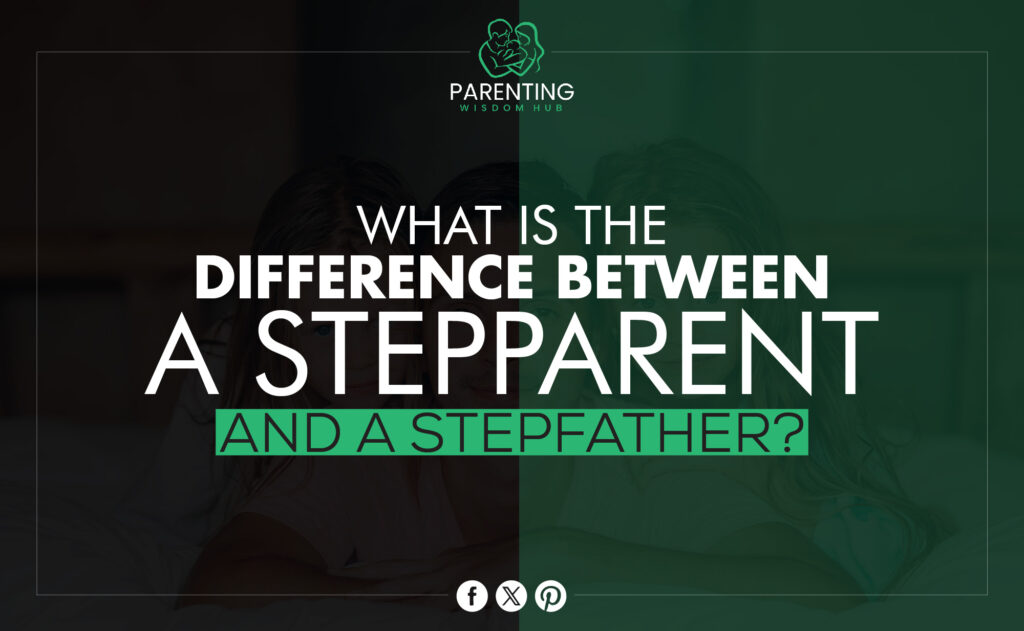Introduction
Blending families presents distinct problems and possibilities. Understanding stepfamily duties is crucial to unity and good parenting for many. There are differences between a stepparent and a stepfather; you are not the only one. This page explains these responsibilities and offers advice on mixed family relations. This material is helpful for blended families, parenting community members, and family counselors.
Stepfamily Dynamics
Stepfamilies have distinct dynamics that must be understood. Unlike nuclear families, complex stepfamilies may contain biological parents, stepparents, and stepsiblings. Clearly defined roles create a pleasant workplace where everyone feels respected and understood.
Emotional relationships in a stepfamily take time to form. Unlike biological ones, stepparent-stepchild relationships require work, patience, and understanding. Open communication is essential to managing these dynamics.
Stepfamilies often confront preconceptions that might complicate integration. All family members—including extended family—must work together to overcome these preconceptions and create a caring atmosphere.
What is a Stepparent?
If you marry someone who already has kids from a previous relationship, you become a stepparent. This job doesn’t depend on gender, so it can be used for both stepmothers and stepfathers. The most important thing a stepparent can do is help their partner raise their kids.
As a stepparent, you need to understand and value the connection between the child and their parents. Stepparents who are good at their job usually take on a helpful rather than controlling role, especially at the beginning.
They also work on getting to know the stepchildren and trusting them. You can do this by spending valuable time with them, being interested in their lives, and being a trusted presence.
What step-father her?
A guy who marries someone who already has kids from a previous relationship is called a stepfather. The main responsibilities are like those of a stepparent, but being a man can change the way things work.
Among the problems stepfathers often face are social standards and ideas people already have about the “father figure.” These things can change how children see and talk to their stepfathers.
To build a connection, stepfather, you must be patient, consistent, and ready to do things that bring people together. It’s important to be sensitive to the child’s needs and speed when building this new connection.
The Emotional Journey of Step-parenting
It’s a lot of fun and hard to be a stepparent. There can be a wide range of strong emotions, from original joy to times of worry.
It can be comforting to know that having mixed thoughts is normal. Many stepparents feel inadequate or have trouble with their job, especially when they don’t fit in with the family’s routine.
Getting help, like through therapy or support groups, can give you useful tools and new ways of looking at things that will help you get through this mental trip.
Blended Family Role Clarification
To avoid confusion and fights, it’s important to make jobs clear in a mixed family. Everyone in the family needs to know what is expected of them and how they fit into the bigger picture.
These goals can be set by having open conversations about jobs and duties. It’s also important to have these talks again and again as relationships and family needs change.
By making jobs clear, mixed families can make a unit where everyone feels accepted and valued.
Legal Considerations in Step-parenting
In mixed families, legal issues often come up, especially when it comes to parenting rights and duties.
In many places, stepparents do not automatically have formal rights to their stepchildren. This can affect choices about the child’s schoolwork, medical care, and other important parts of his or her life.
Stepparents can better understand their rights and responsibilities in the family by learning about the law and, if needed, talking to a lawyer.
Challenges Faced by Step-fathers
Stepfathers have their own problems, like getting past stereotypes and being authoritative without being too controlling.
One problem that many people face is getting their stepchildren to trust and accept them. It’s hard to be present and active without trying to take the place of the actual father.
There are also times when stepfathers feel confused and uncertain about their jobs. Talking openly to their spouse and stepchildren can help ease these problems.
Building Trust with Stepchildren
Getting to know your stepchildren and earning their trust takes time, work, and consistency.
Start by doing things with your children that they like. This will encourage good thoughts and relationships.
Always be sure that what you say and what you do match up. Being consistent makes you reliable, and trust is built on trustworthiness.
Effective Communication in Blended Families
Any mixed family that works needs to be able to talk to each other well. It makes relationships stronger, settles disagreements, and sets clear goals.
Encourage your family to talk to each other in an open and honest way. Make a place where everyone feels safe talking about their feelings and thoughts.
Family meetings on a regular basis can be a good way to stay in touch and talk about important problems.
The Importance of Patience
It’s good to be patient, especially when groups are coming together. It takes time for relationships to grow, and trying to speed things up can cause problems and confusion.
Know that each person in your family will get used to the new rules at their own pace. Respecting each person’s pace can help make the home a peaceful place for everyone.
Seeking Professional Help
Sometimes, you need professional help to deal with the complicated relationships and arguments in your family.
Family counselors can help people who are in mixed families deal with the problems that come up. From a neutral point of view, they can help solve problems that go back a long way.
If you think it would be good for your family, don’t be afraid to get skilled help.
Practical Tips for Successful Blended Families
Families that get along well often have habits and traits in common that help them get along.
Prioritize Quality Time Together
Do things that everyone in the family likes while spending time together. This brings people together and lets them share memories.
Establish Family Traditions
Making new family practices can help bring everyone closer together and make them feel like they belong.
Celebrate Individuality
Unity is important, but recognizing and enjoying the uniqueness of each family member is even more so. Help everyone follow their own interests and hobbies.
Conclusion
Blending families takes patience, empathy, and good communication, but it can be beneficial. Stepfather roles are distinct and provide unique difficulties and possibilities. Blended families flourish when responsibilities are clear and connections are strong.
Remember that you’re not alone on this road. Many services and support networks are available to assist you in negotiating mixed-family relationships. Stepfathers are crucial to forming a loving and caring family.


